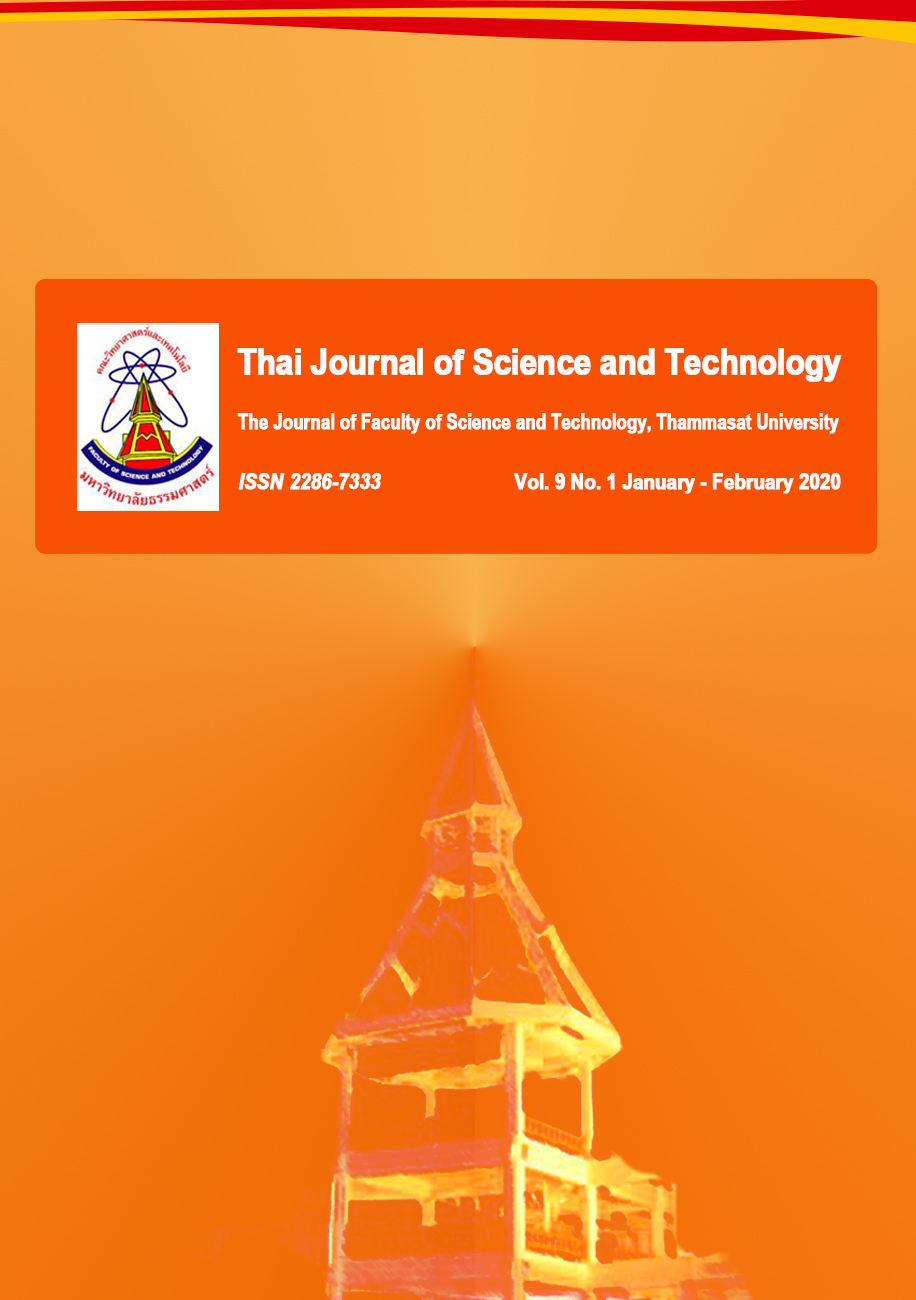สมบัติของคอนกรีตบล็อกที่มีการใช้ขวดพลาสติก Polyethylene Terephthalate (PET) เป็นส่วนประกอบ
Main Article Content
Abstract
Nowadays, there are so many waste plastic bottles in Thailand. This type of waste is difficult to dispose and takes many more years for degradation than other wastes. This research focused on the reduction of plastic bottle waste by an alternative use of PET plastic bottles in concrete blocks for exterior walls in architectural applications. This research aimed to study the factor effecting the dry density, water absorption, compressive strength and thermal conductivity of concrete block containing PET plastic bottles. The products used PET plastic bottles (Type 1) with dimensions: 5 cm diameter, 19.5 cm length, 0.3 mm thickness, 9.6 gram weight with volume of 322 mm3, and PET plastic bottles (Type 2) with dimensions: 5 cm diameter, 18.5 cm length, 0.3 mm thickness, 10 gram weight with volume of 335 mm3 in the dimensions of concrete block: 20 cm width, 30 cm length and 7 cm thickness. Test results when compared to the control concrete block showed that the compressive strength of concrete block containing PET plastic bottles was decreased. Dry density of concrete block containing PET plastic bottles was decreased, while water absorption at 30 minutes and 24 hours of concrete block containing PET plastic bottles was increased. The elasticity of modulus of concrete block containing Type 1 PET plastic bottles was the highest and the modulus of elasticity of concrete block containing Type 2 PET plastic bottles was the lowest. The PET plastic bottles affected the thermal conductivity of concrete blocks depending on the arrangement of PET bottles, in which their performances conformed to the TIS 1501-2541 standard for construction in architectural applications. By comparing the test results of properties with the other concrete block containing PET plastic bottles, the concrete block containing Type 1 PET plastic bottles with three bottle arrangement is the most proper concrete block for exterior wall applications with high dry density and compressive strength, low absorption and thermal conductivity. The results of this research can be used as a guideline for using PET plastic bottles in exterior wall construction for architectural works.
Article Details
บทความที่ได้รับการตีพิมพ์เป็นลิขสิทธิ์ของคณะวิทยาศาสตร์และเทคโนโลยี มหาวิทยาลัยธรรมศาสตร์ ข้อความที่ปรากฏในแต่ละเรื่องของวารสารเล่มนี้เป็นเพียงความเห็นส่วนตัวของผู้เขียน ไม่มีความเกี่ยวข้องกับคณะวิทยาศาสตร์และเทคโนโลยี หรือคณาจารย์ท่านอื่นในมหาวิทยาลัยธรรมศาสตร์ ผู้เขียนต้องยืนยันว่าความรับผิดชอบต่อทุกข้อความที่นำเสนอไว้ในบทความของตน หากมีข้อผิดพลาดหรือความไม่ถูกต้องใด ๆ
References
สำนักงานมาตรฐานผลิตภัณฑ์อุตสาหกรรม, 2541, มอก. 1505-2541 ชิ้นส่วนคอนกรีตมวลเบาแบบมีฟองอากาศ-อบไอน้ำ, กระทรวงอุตสาหกรรม, กรุงเทพฯ.
กรองทิพย์ เติมเกาะ, 2560, การทดสอบสภาพการนำความร้อนของฉนวนกันความร้อนคอมโพสิท, ว.กรมวิทยาศาสตร์บริการ 60(190): 9-11.
Mansour, A.M.H. and Ali, S.A., 2015, Reusing waste plastic bottles as an alternative sustainable building material, Energy Sustain. Develop. 24: 79-85.
NUCIFER.COM, อิฐมวลเบา : ข้อดีข้อเสียของวิธีการผลิตอิฐมวลเบาแบบ ACC และ CLC, แหล่งที่มา : https://www.nucifer.com/2014/12/05/อิฐมวลเบา_aac_clc, 5 ธันวาคม 2557.


